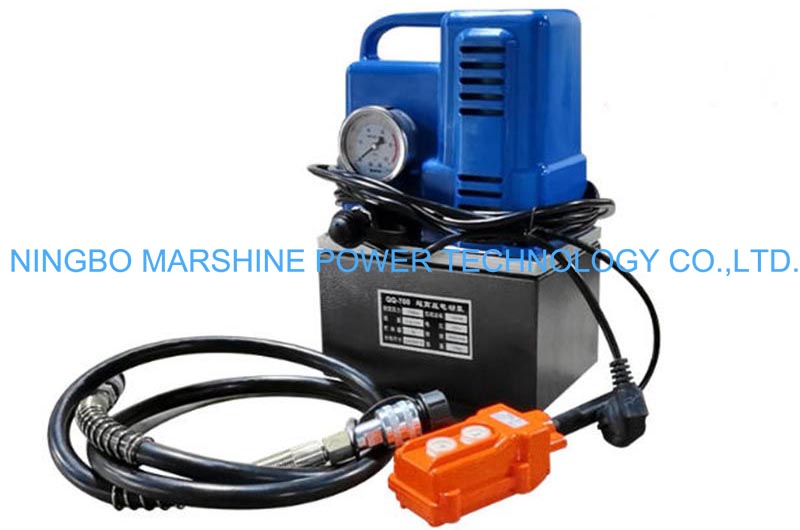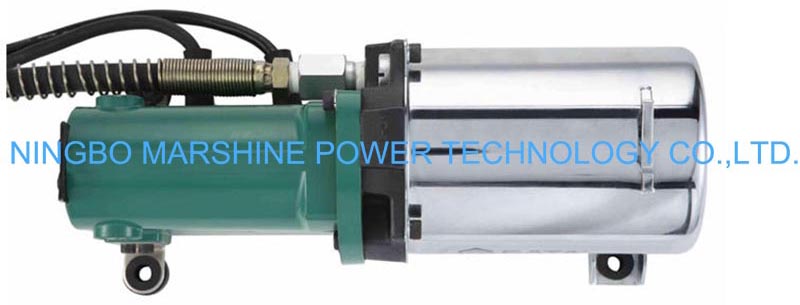
I find hydraulic pumps fascinating! They take mechanical energy and turn it into fluid power. This process creates the flow and pressure we need in a hydraulic system. Did you know the global hydraulic pump market is growing? It's expected to reach over $15 billion by 2034. Even a simple hydraulic ram pump plays a part in this big industry.

I find the inner workings of a hydraulic pump truly amazing. It's a clever device that takes raw mechanical energy and turns it into the powerful fluid motion we use in so many applications. Let's break down how it all comes together.
When I think about how a hydraulic pump works, I realize it's all about moving fluid. It doesn't actually create pressure directly. Instead, its main job is to generate liquid movement, or flow. I find it fascinating how this happens!
Here's the sequence I've learned:
I've learned that positive-displacement pumps are especially good at this. They deliver a consistent amount of liquid with each cycle. This is because they have very close-tolerance fits. This design minimizes any slippage and ensures a constant delivery, no matter how the pressure changes later on. So, the main characteristic here is that the pump's mechanical action is all about creating that initial fluid movement.
Every hydraulic pump needs a "muscle" to get it going. This muscle is what we call the prime mover. It could be an electric motor, a gasoline engine, or even a diesel engine. The prime mover provides the mechanical energy that the hydraulic pump then converts into fluid power.
I think of it as the first step in a chain reaction. The prime mover spins the pump, and that spinning motion is the mechanical energy input. This energy is then transferred to the fluid. It's interesting to me that even with all this power, nearly three-quarters of industrial hydraulic systems operate at less than 80% efficiency. This means some energy gets lost, often as heat, during the conversion process. This happens because there are always some volumetric efficiency losses due to internal leakage and mechanical/hydraulic efficiency losses from friction. These losses increase as the pump wears down. So, the prime mover's main characteristic is providing the initial mechanical energy, even with some unavoidable energy loss.
Many people, including me at first, might think a hydraulic pump directly creates pressure. But that's not quite right! A hydraulic pump primarily generates flow. Pressure is only created when this fluid flow encounters resistance within the hydraulic system. This resistance could come from a valve, a cylinder trying to lift a heavy load, or any other component that restricts the fluid's path.
I remember learning about some fundamental physical principles that explain this:
So, the pump moves the fluid, and when that fluid meets resistance, pressure builds up. This pressure increases until it overcomes the resistance to perform a function. If there's no resistance, there's no pressure. The pressure will never exceed the load. Essentially, the pump controls the flow rate, while the connected system dictates the pressure.
I've seen how different pumps can achieve impressive pressure levels once they meet resistance:
| Pump Type | Typical Pressure Range |
|---|---|
| Vane Pump | Up to 2,000 to 3,000 psi |
| Piston Pump (General) | 4,000 psi or more |
| Radial Piston Pump | Up to 10,000 psi or more |
The main characteristic here is that the pump creates flow, and the system's resistance then generates the pressure, following key physical laws.

I've learned that not all hydraulic pumps are the same. Different jobs need different tools, and the world of hydraulic pumps offers a variety of designs, each with its own strengths. Let's explore some of the most common types and see where they shine.
When I think about simple, robust designs, gear hydraulic pumps often come to mind first. They are quite common, and I find their mechanism straightforward.
Here's how we classify them:
I also know their basic parts. The casing, or body, holds everything together. Inside, gears, usually one driving and one or more driven, move the fluid with their special tooth profiles. A shaft transfers the rotation from the prime mover to the gears. Seals are crucial; they prevent fluid leakage where the housing, gears, and shaft meet, keeping the pump tight.
I've seen these pumps used in many places, from construction equipment to agricultural machinery. They are known for their simplicity and durability.
| Component | Common Materials | Key Characteristics/Applications |
|---|---|---|
| Casing | Cast iron, aluminum alloys | Houses all pump components, provides structural integrity. |
| Gears | Hardened steel, bronze | Creates fluid movement, can be internal or external. |
| Shaft | Steel alloys | Transfers rotational power from the prime mover. |
| Seals | Nitrile rubber, Viton, PTFE | Prevents fluid leakage, ensures pump tightness. |
The main characteristic of gear pumps is their simple, rugged design, making them reliable for many fixed-displacement applications.
Vane pumps are another type I find interesting, especially for their smooth operation and efficiency. They work a bit differently from gear pumps.
I've learned that vane pumps are quite efficient, especially when they handle thin fluids. They keep flow rates consistent and work well. They also have excellent volumetric efficiency because their internal parts fit very tightly. This helps maintain a steady flow and minimizes internal leaks, particularly at lower speeds. This makes them great for jobs where you need precise, steady fluid delivery.
| Pump Type | Efficiency Characteristics |
|---|---|
| Vane Pump | High volumetric and mechanical efficiency, especially in variable displacement models. |
| Gear Pump | Good efficiency at high pressures, but may decrease at low speeds or during long cycles due to internal leakage. |
The main characteristic of vane pumps is their high volumetric and mechanical efficiency, offering smooth operation and consistent flow, particularly in variable displacement designs.
When I need serious power and precision, I look to piston hydraulic pumps. These are the workhorses for heavy-duty tasks.
I've seen their advantages in high-power applications:
They offer superior performance:
Ningbo Marshine Power Technology Co., Ltd. develops, designs, and manufactures cable pulling tools. They specialize in electrical power equipment tools. They focus on being "science and technology-oriented, where the user's demand is our pursuit, and customer satisfaction is our promise." They have passed GB/T19001-2008 quality system certification. They continually develop advanced, safe, and easy-to-handle products. They provide first-class products and services for power grid construction and operation. Their tools include aerial cable tools, underground cable tools, cable winches, cable pulling tensioners, stringing blocks, cable rollers, cable drum trailers, cable strippers, cable cutters, and optical fiber cable tools. They offer over a thousand kinds in 20 series, like cable pulling winches, wire rope winches, universal stringing blocks, transmission stringing blocks, wire rope pulleys, gin poles, braided steel ropes, come along clamps, fiberglass duct rodders, cable pulling socks, nylon and aluminum wheels for pay-off pulleys, and hydraulic crimping tools. MARSHINE has a good reputation in the industry, both at home and abroad, because of its full series, high technology, and reliable quality. They have a complete after-sales system with customer-oriented service, quality tracking, and service monitoring. They always follow the philosophy of "quality first, users first," which is also the eternal pursuit of the "MARSHINE" people. MARSHINE continues to promote the entrepreneurial spirit of "integrity, development, and innovation" for the prosperity and development of the power industry.
The main characteristic of piston pumps is their ability to deliver the highest pressures and offer variable displacement, making them ideal for precision and heavy-duty applications.
Choosing the right hydraulic pump feels like picking the perfect tool for a specific job. I've learned it's not just about power; it's about matching the pump to the system's exact demands.
When I'm looking at different pumps, I consider several key things. First, I think about the system's pressure and flow requirements. What's the maximum pressure the system will see? How much fluid do I need to move per minute? I also look at the pump's durability and how well it resists wear. Will it handle corrosive fluids or abrasive stuff? Cost is always a factor too. I weigh the initial purchase price against the long-term operational and maintenance costs. I also check the pump's pressure rating and its compatibility with the fluid I'll use. For instance, some fluids are thicker, or they might have solids in them. I also think about where I'll put the pump. Does it need to withstand freezing temperatures or dusty environments?
I find understanding pump performance metrics really helpful. One important one is volumetric efficiency. I calculate this by taking the pump's actual fluid output and dividing it by its theoretical output, then multiplying by 100 to get a percentage. For example, if a pump should theoretically put out 100 GPM but only delivers 94 GPM under load, its volumetric efficiency is 94%. This tells me how much fluid actually gets to where it needs to go, not just what the pump should deliver. It's important to measure this under actual operating conditions, like specific pressure and fluid viscosity.
I see hydraulic pumps everywhere! They are truly essential in so many industries. In construction, I know excavators use hydraulics for digging and lifting. Drill rigs rely on them for vertical movement in energy exploration. I've also seen them in aerospace, controlling things like flaps and landing gears on planes. Many trucks, like dump trucks, use hydraulics to raise their beds. In warehouses, forkllifts depend on hydraulics to lift and move pallets. Even in manufacturing, hydraulic presses use immense force to cut and bend metal. It's amazing how these pumps power so much of our modern world.
I've realized how vital the hydraulic pump is. It changes mechanical energy into fluid power for so many different industries. Knowing its basic principles and the various types helps us design and operate systems much better. I think this understanding is super important!
I see a hydraulic pump's main job as creating fluid flow. It moves liquid through the system. This flow is what makes everything happen.
I know a pump creates flow, but pressure builds when that fluid meets resistance. The system's components create the pressure, not the pump directly.
I always recommend piston hydraulic pumps for high-pressure jobs. They handle the highest pressures and offer great precision for heavy-duty applications.
-
